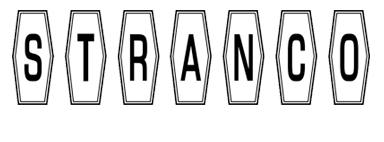Complying with the Department of Transportation's Hazardous Material Regulations can be challenging for many manufacturers, suppliers and distributors transporting toxic chemicals. Despite the complexities surrounding these regulations, they were enacted in response to the growing dilemma of significant property and environmental damage, along with injury and death, caused by crashes or incidents with vehicles carrying hazardous materials.
Since the U.S. adopted the Hazardous Materials Transportation Act of 1975, federal regulators have used this and subsequent amendments to "protect against the risks to life, property, and the environment that are inherent in the transportation of hazardous material in intrastate, interstate and foreign commerce." All standards are enforced under the Title 49 of the United States Code through four key provisions: procedures and policies, material designations and labeling, packaging requirements and operational rules.

What is a hazardous material?
According to the DOT, hazardous materials includes all hazardous wastes, substances, elevated temperature material, marine pollutants and many materials outlined in sections 172.101 and Part 173 of federal standards. The Federal Motor Carrier Safety Regulations explained Part 172 of 49 CFR outlines all of these hazard materials on a comprehensive table, along with communication requirements, emergency response mandates and more.
What are 49 CFR 172 labeling requirements?
According to current 49 CFR 172.400 general labeling requirements, "each person who offers for transportation or transports a hazardous material in any of the following packages or containment devices, shall label the package or containment device with labels specified for the material in the 172.101 table." There are nine hazard classes as outlined by these 49 CFR 172 standards and all must comply with strict formatting and design requirements.
- Class 1: Explosives contains six subsequent divisions, including breaking down mass explosive hazards, projection hazards, mass fire hazards, minor explosion explosion hazards and more.
- Class 2: Gases contains three divisions, including flammable gases, non-flammable gases and poisonous or toxic gases.
- Class 3: Flammable Liquid contains all materials whose Flash Point is not above 141 degrees.
- Class 4: Flammable Solids contains three divisions, including flammable solids, spontaneously combustible material and dangerous materials when wet.
- Class 5: Oxidizing Substances and Organic Peroxides deals with both oxidizers and organic peroxides.
- Class 6: Poisonous and Infectious Substances.
- Class 7: Radioactive Material.
- Class 8: Corrosives.
- Class 9: Miscellaneous Dangerous Goods contains all additional environmentally hazardous substances, elevated temperature material, hazardous wastes and marine pollutants.
How can your company adhere to these labeling requirements?
As a manufacturer, it is your responsibility to adhere to all 49 CFR 172 labeling requirements if you transport any hazardous materials. Not only are you keeping yourself safe from federal fines and citations, but you are being proactive about keeping other motorists on the road or workers in a facility safe. When fixing your hazardous material cargo or products with the right DOT labels, diligently follow all federally mandated design, size and durability requirements.
According to current 49 CFR 172.407 general labeling specifications, "Each label, whether printed on or affixed to a package, must be durable and weather resistant. A label on a package must be able to withstand, without deterioration or a substantial change in color, a 30-day exposure to conditions incident to transportation that reasonably could be expected to be encountered by the labeled package."
At Stranco, we offer a wide selection of durable labeling options that meet all 49 CFR 17 labeling requirements for transporting hazardous materials. We offer DOT labels for all nine hazard classes, along with additional hazardous material labels, depending on your unique labeling needs. Contact us today to learn more!

